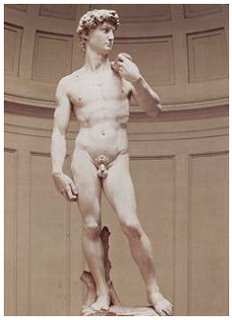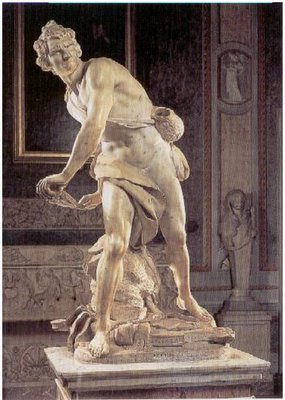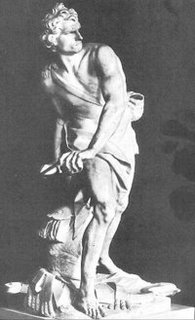 The chief artistic difference between the Renaissance period and the Baroque period that followed it was the difference between learning and applying. The Renaissance masters rediscovered classical technique and produced art that glorified this earth rather than some other dimension for the first time in centuries. The Baroque masters stood on the shoulders of those making this rediscovery, and made the most of the lessons learned to do something quite new in artistic history.
The chief artistic difference between the Renaissance period and the Baroque period that followed it was the difference between learning and applying. The Renaissance masters rediscovered classical technique and produced art that glorified this earth rather than some other dimension for the first time in centuries. The Baroque masters stood on the shoulders of those making this rediscovery, and made the most of the lessons learned to do something quite new in artistic history.For the first time in art we see dramatic movement, great power, intense emotion; the expression of each of these became possible to the artists in the Baroque period because of the lessons learned by the masters of the Renaissance.
The two great statues of David that are separated by just over a century give the lesson. In his depiction of the great Biblical hero, Michelangelo fuses classicism with Florentine humanism. Selecting the psychologically-charged moment of calm -- the centre of the storm just before battle -- he shows the moment of decision, the act of mind that won the battle.

 Bernini however shows something quite different. For his piece he chooses the moment of action; the instant in which the battle is joined.
Bernini however shows something quite different. For his piece he chooses the moment of action; the instant in which the battle is joined.
Where Michelango's David of 1501-04 is static, suggesting the later movement rather than showing it, Bernini's of i623-24 is all motion, all power, and displays the inner emotional intensity of the shepherd-warrior.
Motion and purpose, fused with emotion - all the very real essentials of life; this fusion was the leitmotif of the very best of Baroque expression.
1 comment:
I'll go with Bernini. According to scripture David was red-headed. Put jeans and T-shirt on Bernini's piece and you could substitute it for a reuters picture of a Belfast yob heaving rocks at a British Army landrover
Post a Comment